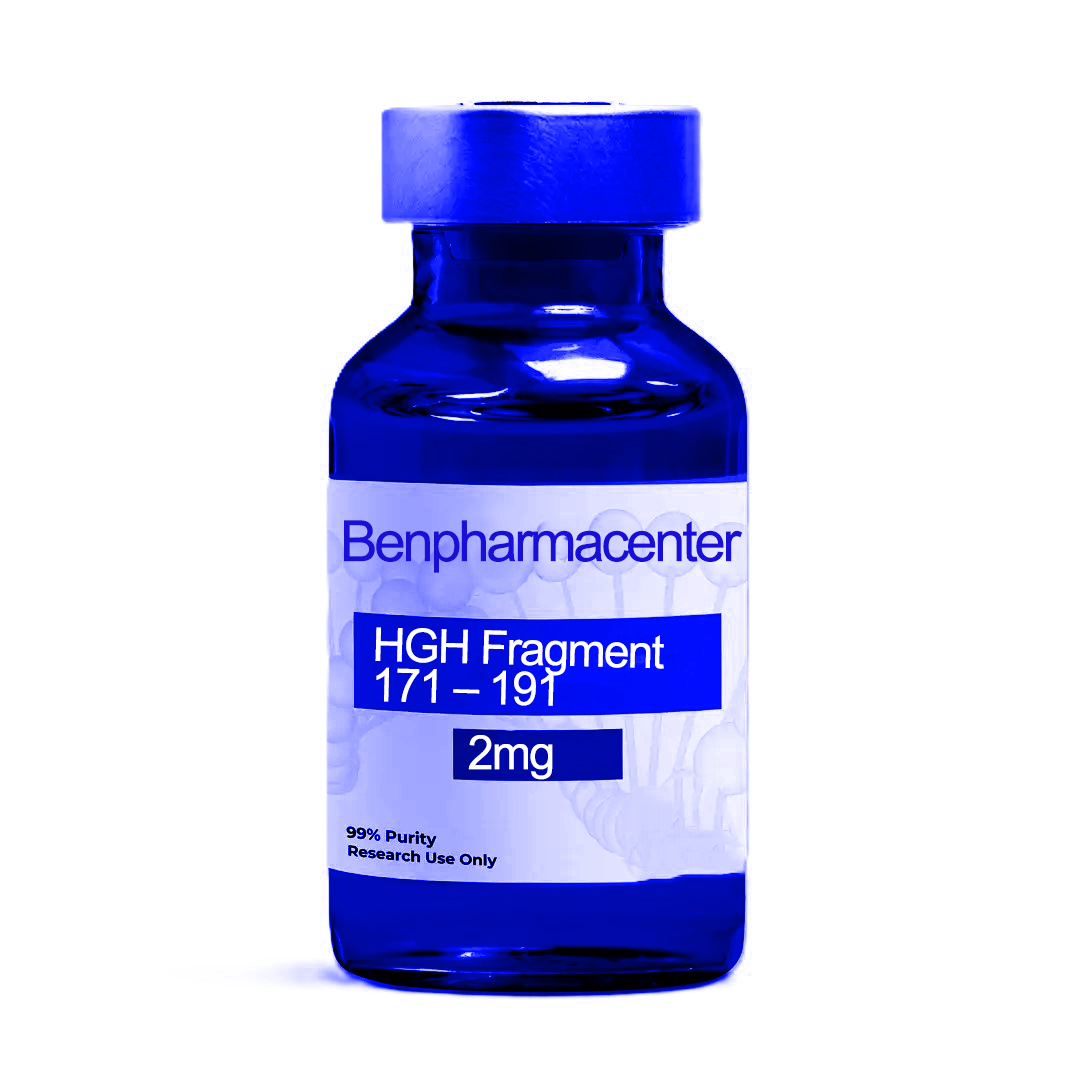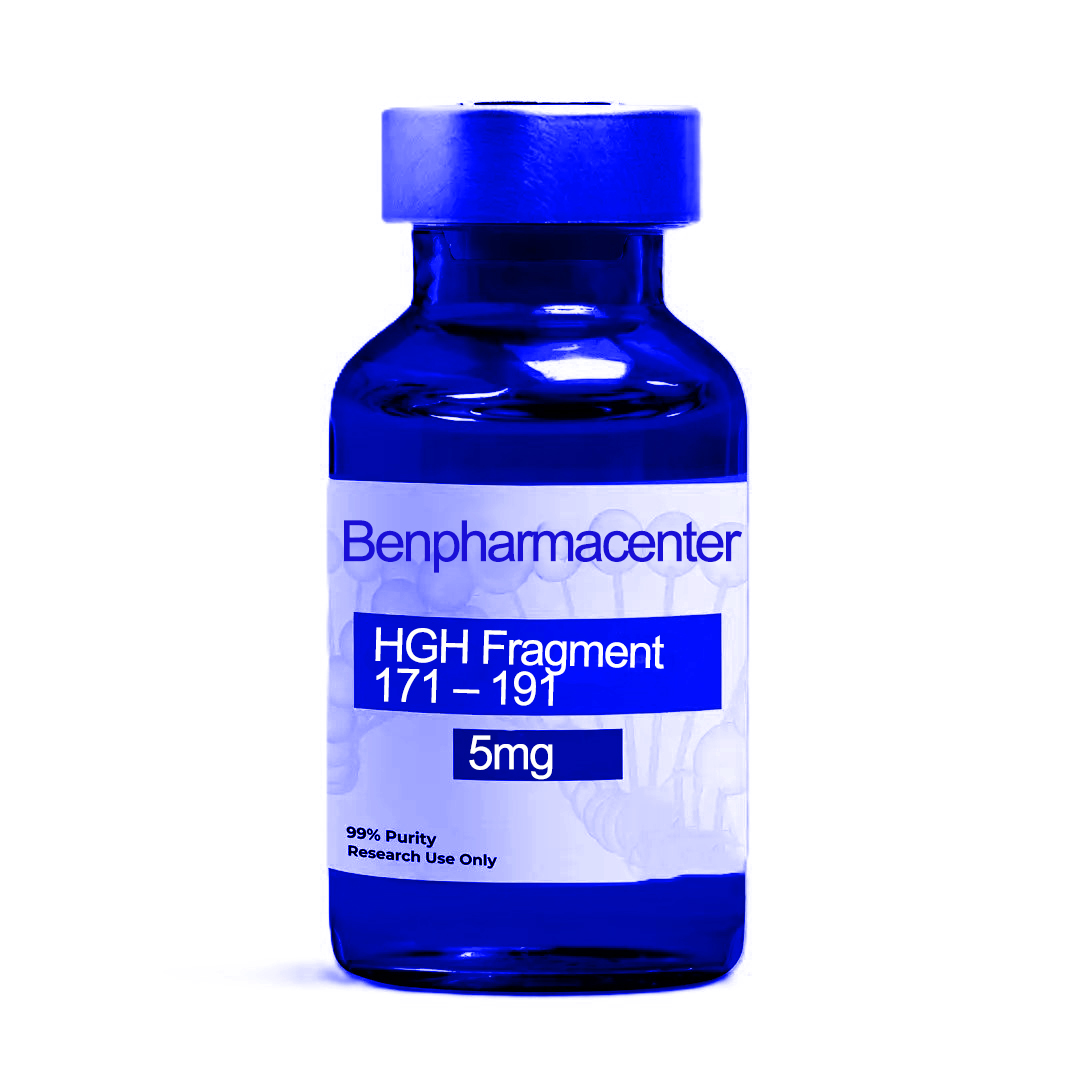HGH Fragment 176–191 Synthetic Peptide
Fragment 176-191 is a modified peptide derived from human growth hormone (HGH) that contains only a small section of the original molecule – amino acids 176 to 191. Scientific interest focuses on its ability to selectively influence fat metabolism without significantly affecting growth processes.
HGH Fragment 176-191 is a laboratory-created fragment of the naturally occurring human growth hormone (hGH). It is also called the “lipolytic fragment” and it has the potential to help with fat loss. It has been shown to decrease blood sugar levels and help with repairing cartilage—without impacting IGF-1 levels, altering the insulin response, or stimulating bone growth. This makes it an excellent option for focused fat reduction and recovery support.
What Is Hgh Fragment 176-191?
HGH-FRAG is a short fragment of Human Growth Hormone. More precisely, it consists of the terminal 16 amino acids of the entire 191-amino-acid structure of HGH. The chemical formula of this peptide is C39H60N8013.
Even though it is a fragment of HGH, HGH-FRAG works quite differently. You would expect it to act like the full hormone, since it is part of the same protein, but it doesn’t.
In contrast to HGH, HGH-FRAG does not bind to Growth Hormone Receptors (GHR) because it does not have the complete sequence of 191 amino acids. Therefore, it does not cause IGF-1 release or execute the anabolic action that HGH typically does.
So what does HGH-FRAG 176-191 do, then?
Based on animal studies, it primarily preserves the fat-burning action of HGH. Due to this, HGH-FRAG is primarily used to enhance fat metabolism and help preserve the lipid processes in the test subject body.
How does HGH-Fragment Work?
The specific mechanism through which HGH-FRAG operates is not yet defined and remains in controversy among scientists. Still, several studies in animals have identified certain areas where HGF-FRAG appears to have critical influences.
As opposed to the unbroken Growth Hormone, HGH-FRAG does not transfer all the attributes of its parent hormone. Instead, it retains only a single key function: stimulating the breakdown of fat, or lipolysis. In the experiment of obese mice, HGH-FRAG 176-191 was determined to stimulate the formation of beta-3 adrenergic receptors in the fat cells.
These receptors play an important role in mobilizing and utilizing lipids that are stored in fat tissue. They also aid in thermogenesis – the production of heat—particularly in skeletal muscle tissue.
In an experiment, obese mice that were given HGH-FRAG for three weeks recorded a reduction in weight gain of approximately 50%.
Remarkably, this weight reduction effect was achieved only in obese or mice. The body weight of the normally weighted mice was not lowered significantly by treating them with HGH-FRAG.
One possible mechanism through which HGH-FRAG acts is by its ability to lower blood sugar levels, a feature ascribable to its C-terminal molecular configuration. Researchers have explored the possibility of fragments of HGH like 176-191 having similar effects. Initial proof suggests that this peptide can be utilized to lower blood glucose, increasing the possibility of its use in the treatment of pre-diabetes and type 2 diabetes (DMT2).
But more research – including larger trials and meta-analyses – must be conducted before any of these mechanisms can be proven with high scientific certainty.
Hgh Fragment 176-191 Research
Helps Lower Blood Sugar
Animal trials have demonstrated that the c-terminal, or tail end, of human growth hormone (hGH) is responsible for lowering blood sugar. Researchers have tried different segments of hGH, and the most potent segment to lower glucose is fragment 176-191. Its advantage seems to be from a consistent increase of insulin in the blood. Because of these discoveries, researchers are now studying the use of fragment 176-191 as a potential therapy for patients with prediabetes or type 2 diabetes.
Fat Burning and Weight Loss
Fragment 176-191 is also called the “lipolytic fragment” because of its highly lipolytic fat-burning activity seen in mouse experiments. The peptide was found to significantly increase the breakdown of fat and weight loss in experiments. This action is seen to be associated with an augmentation in beta-3 adrenergic receptor (ADRB3) activity, which is used for fat breakdown in fat tissue and for heat production in the muscles. Interestingly, these receptor-deficient mice are unresponsive to the fat-loss action of this fragment’s or normal hGH’s, which shows the significance of the receptor. Additional research has shown that animals administered fragment 176-191 underwent dramatic weight loss, particularly animals that had more body fat.
Obese mice in one study showed almost 50% decrease in weight gain over three weeks. No effects were seen with lean mice, implying that the compound affects fat metabolism in obese subjects primarily. These findings also imply the existence of additional fat-burning mechanisms that may be functioning when ADRB3 is not necessary or not functioning—a new research area with much potential for elucidating how the body regulates energy balance.




Reviews
There are no reviews yet.